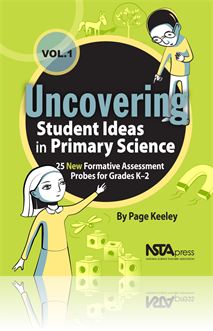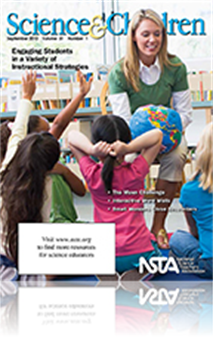All Teaching Strategies resources
NSTA Press Book
Winner of the Distinguished Achievement Award from PreK-12 Learning Group, Association of American Publishers!What ideas do young children bring to their science learning, and how does their thinking change as they engage in “science talk”? Find...
By Page Keeley
Book Chapter
The purpose of the assessment probe, in this chapter, is to elicit children’s ideas about variations in sound. The probe is designed to reveal students’ thinking about factors that affect pitch....
Journal Article
Editor's Note: Pondering Instructional Strategies
Science and Children’s editor shares thoughts regarding the current issue....
Journal Article
The Early Years: Food for Thought
This column discusses resources and science topics related to students in grades preK to 2. In this month’s issue students focus on possible evidence of animals using plants for food or shelter....
Journal Article
Developing and Using Models to Align With NGSS
Bring the Earth-Moon-Sun system into alignment with the Next Generation Science Standards....
Journal Article
Incorporating Models Into Science Teaching to Meet the Next Generation Science Standards
Discover what the NGSS has to say about the proper use of models in the middle school classroom....
NSTA Kids
Named an Outstanding Science Trade Book for Students K-12!Winner of the REVERE Award from PreK-12 Learning Group, Association of American Publishers!...
NSTA Press Book
Science for the Next Generation: Preparing for the New Standards
“The old models of teaching as simply telling, and learning as passive sit-and-get listening, will not meet the needs of tomorrow’s citizens.” —Thomas O’Brien in the Overview to Science for the Next Generation Preparing for tomorrow is ...
NSTA Press Book
Even More Picture-Perfect Science Lessons: Using Children’s Books to Guide Inquiry, K–5
Winner of the Gold EXCEL Award from Association Media & Publishing!“The number one compliment we hear from teachers is that the lessons are complete and ready to take back to their classrooms and use.” —Emily Morgan and Karen Ansberry, coautho...
By Emily Morgan, Karen Ansberry




